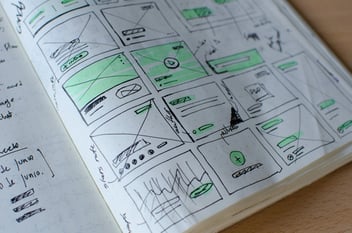The Unseen Value of UX Consultants
Hiring a UX consultant can bring many benefits, but the most important often goes overlooked: an unbiased perspective.
Related: Should You Hire a Designer or Work With a UX Agency? Here’s How to Decide.
Before we continue, let’s all acknowledge that humans are hopelessly biased. Logically, no one can be genuinely “unbiased.”
However, there are effective ways to defend against bias in the UX design process, and there are certain scenarios where some individuals are less biased than others.
The benefits of an unbiased perspective in design are well documented — the $300 million button is a famous example.
Similarly, recent history is littered with stories of redesign projects that needed a fresh pair of eyes (and a lot more user research). Just listen to Jakob Nielsen describe why it's so easy for people to slip into bias:
If employed correctly, a UX design consultant is worth their weight in gold because they identify problems and opportunities your team is missing.
What’s more, the experience of a UX consultant can also help your organization in other ways, like scaling your design team or improving alignment between design and development teams.
The rest of this article explains.
- How confirmation bias is detrimental to the design
- What UX design consultants do and how they help eliminate bias
- When you should consider hiring a UX consultant
How bias affects the UX design process
Confirmation Bias
The human mind is conditioned to take shortcuts. That’s why our brain takes repetitive processes and transforms them into habits. This saves us mental energy and allows us to focus on more complex tasks.
But in our professional lives, these biases can work against us. Successful UX designs are built through objective user research and iterative testing, not quick, biased decisions.
If the process is biased — either in the research or ideation phase — then the results might not reflect the users' true needs. Instead, they’ll embody someone’s narrow opinion.
The most common type of bias is confirmation bias, when you only accept or seek out information supporting your viewpoint.
Whether you’re a designer, an IT leader, or a product owner, you could let confirmation bias affect your work. This bias is extremely common and can tremendously impact how we perceive information.
For designers, this can be biased user research questions or skipping specific research techniques to focus only on an idea you’re emotionally attached to.
For project owners, confirmation bias could mean rejecting information or ideas that clash with yours. It’s common for stakeholders to think they already know their audience when the audience might require something entirely different.
This mindset is the antithesis of user-centered design. Confirmation bias leads to design fixation or tunnel vision, and it freezes out other ideas that may lead to the breakthrough you’re looking for.
Most importantly, leaving your confirmation bias unchecked is a significant business hazard. Take Snapchat’s redesign.
After the redesign went live in 2018, new Snapchat rankings in the App Store went down in a spectacular blaze of glory. People hated it.
Over 1.2 million people hated it so much they signed a petition to get the old design back.
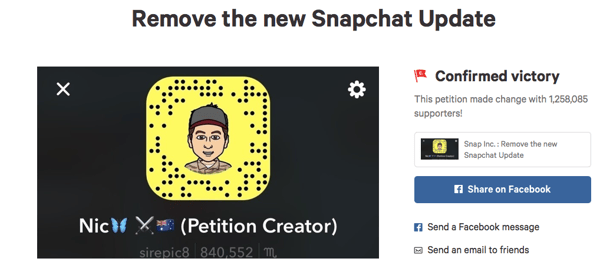
With all the available resources, Snapchat could have performed more user testing to validate its new design.
And yet, the redesign went live.
Shortly thereafter, the social media platform posted its slowest user growth numbers. And stocks fell 15%.
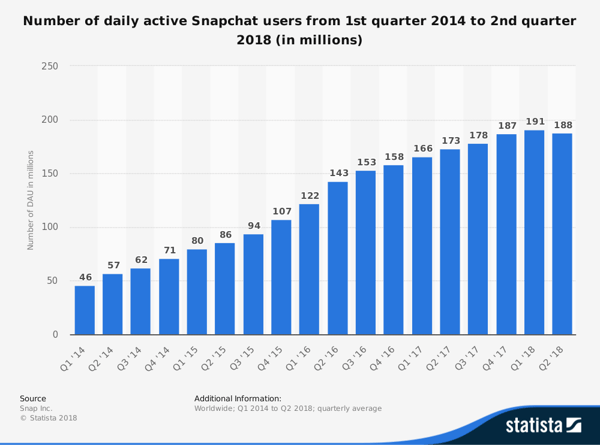
At a time when Snapchat needed to rally, it tripped over its redesign.
Even under intense user pressure, Snapchat refused to revert to the old design. So far, the platform has only promised improvements to the current version.
I can only speculate, but to push a user experience live that was this flawed could easily have been the work of deep-seated confirmation bias.
It’s not impossible to believe design leaders at Snapchat wanted the new UX to behave a certain way, and they forced that design into production.
To avoid the HIPPO effect
Even though humans harbor intrinsic biases, there are techniques designers can use to overcome them. The problem is they’re often not allowed because of their environment.
The highest-paid person’s opinion (HIPPO) can be the primary source for guiding design direction. So, even though designers have techniques to overcome bias, suggesting alternatives that challenge the HIPPO could have negative consequences.

This usability data is excellent, but we must add more animations to the page.
This scenario creates a culture of intrinsic bias, which perpetuates the belief of a handful of stakeholders rather than harnessing the insight of users.
Indeed, a study from the Rotterdam School of Management found that gaming development projects led by junior managers were more successful than those led by senior managers.
The study hypothesized that junior managers succeeded more often because they were more receptive to feedback from their colleagues.
This is precisely how the human-centered design process works.
Instead of developing one narrative and forcing the project to conform, designers seek diverse opinions from users, stakeholders, and developers.
This informs how they move forward and the design changes based on those parties' feedback. The result reflects what the audience wants rather than one person's thoughts.
How Can a UX Design Consultant Help?
Okay, so you get that you might need an outside perspective to help with your design projects. But what does a UX design consultant provide?
Every consultant will have different capabilities, but here are the areas where an outside UX specialist can help you:
User Research
At DePalma, we’ve worked with clients who tried to design and launch an application internally but failed because users rejected the company’s solution. In nearly every case, the cause was a lack of in-depth user research.
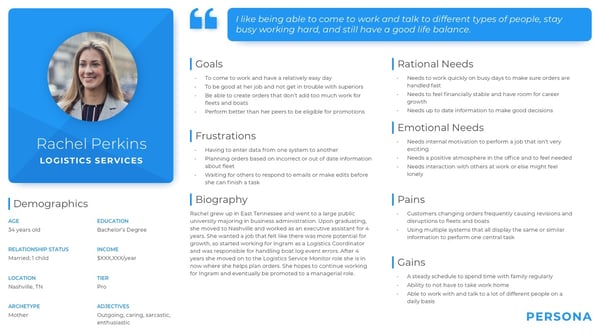
User research is often overlooked for several reasons:
- It’s too time-consuming
- Deliverables aren’t always visual, so it isn’t easy to appreciate their importance.
- Project leads think that they already know what the users want
If you feel any of these hesitations about research, ignore them.
User research is the primary tool to overcome internal bias and discover ideas that truly connect to end-users wants. Without it, you’re putting your entire project in jeopardy.
UX Strategy
Every month, more UX designers enter the market. But you can’t replace experience, and a worthwhile consultant will know how to plan and help you develop long-term goals for user experience.
UX strategy is where a consultant’s outside perspective shines because they’ll be able to apply their viewpoint to your company’s goals without fear of upsetting an established hierarchy.
This is especially useful in enterprise organizations, where strategy can become entrenched in a political quagmire.
The strategy process may sometimes be difficult because it may require organizational change. But innovation and successful UX design grow best from various opinions, and emphasizing how your organization interacts with users will only lead to good things.
UX Design
Consultants should also be skilled at guiding — or even performing — the work of creating the user experience.
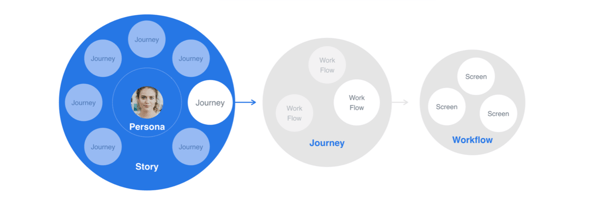
A time-tested process is the foundation of successful design, and it’s precisely where many will fall short. Even if you have an in-house team of UX designers, they can still learn much from an experienced UX consultant and their battle-tested process.
For example, a consultant can explain when to conduct usability testing during the design phase or how to identify helpful stakeholder feedback from biased input.
The knowledge a consultant can transfer to your team will improve the project they and the consultant are working on and accelerate their professional growth.
Design Systems
As your organization grows and your design becomes more complex, creating a system of standards your team can reference is essential.
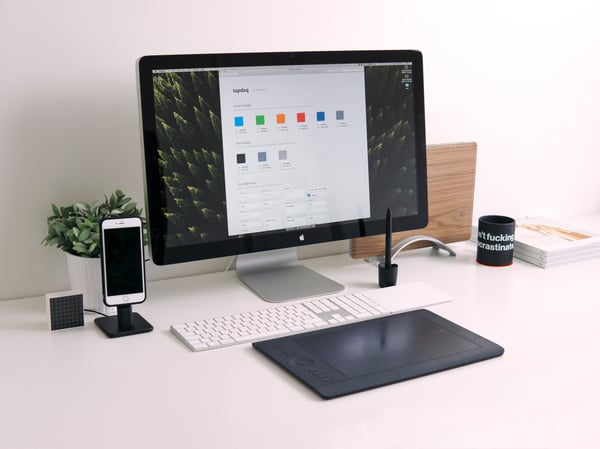
These are called design systems and act as repositories for anything design-related in your organization.
Their primary value lies in ensuring consistency throughout your application or product portfolio, but they also help increase efficiency as your team grows.
Building a design system can be daunting, but this is yet another area where a good UX consultant can provide valuable input and lead in building a viable system.
When to hire a UX consultant
There are three main times to hire a UX consultant:
#1: In the beginning stages of a project
User research is most influential when conducted in the nascent stages of a project because the data guides the ideation phase, which is when designers work out solutions for the audience’s main challenges.
Bringing a consultant in at the beginning stages helps you avoid making mistakes that become more costly to fix later in the process.
#2: When it’s time to redesign
Redesigning an application is a vital way to keep pace with the changing expectations of your users. However, as we saw with Snapchat, redesigns are high-risk undertakings. Having an experienced voice to guide the redesign process is always beneficial.
Plus, it helps combat dangerous biases that emerge among in-house teams.
#3 When you need to innovate or scale
It’s important to know what you don’t know. And it’s even more important to actively pursue new, audience-approved ideas that you can bring to market or implement on your website.
Similarly, if you need to scale your team, hire a consultant to help you identify gaps in your existing team and find candidates with the right skills to expand the team’s capabilities.
***
It’s not always easy to look outside your organization for expertise. It’s been ingrained in many business leaders that they should create a culture of innovation or build a team that uncovers every possibility.
In reality, bringing in an outside perspective is usually an excellent idea — particularly in a field as dynamic as UX design.




